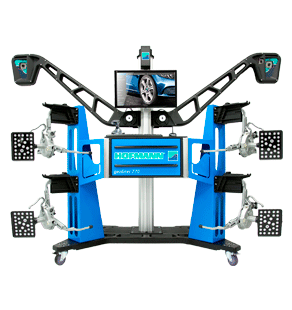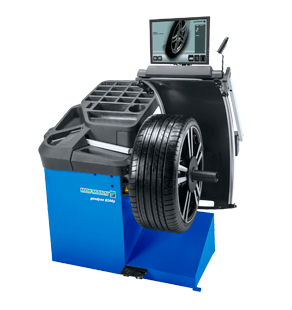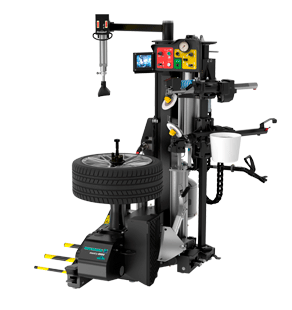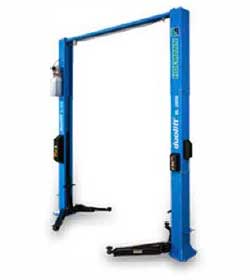Symmetric vs Asymmetric Lift: The Key Differences Every Shop Should Know
When outfitting an automotive repair facility, it’s important to select the appropriate vehicle lift. The two-post lift in particular is a staple in many workshops that comes in two primary configurations: symmetric and asymmetric.
Each design presents unique advantages and potential drawbacks. It helps to understand their distinctions so you can make an informed choice that aligns with your shop's specific needs.
Understanding Two-Post Lifts
Two post car lifts are efficient, space-saving, and ideal for vehicle maintenance. They consist of two vertical posts with adjustable arms that lift vehicles for easy access. Their compact design suits shops with limited floor space and allows for a variety of services, from undercarriage inspections to transmission work.
Symmetric two-post lifts have evenly spaced columns and equal-length lift arms. These help maintain a balanced weight distribution, making it ideal for trucks and larger SUVs due to their stability and wider drive-through space. However, they may limit access to vehicle doors during servicing.
On the other hand, asymmetric two-post lifts have shorter front arms and angled lift columns. As a result, vehicles are positioned further back to provide better access to doors. This design reduces the risk of door damage and works well for passenger cars, sports cars, and FWD trucks with uneven weight distribution. In this case, proper positioning is necessary for stability.
Key Differences Between Symmetric and Asymmetric Lifts
The primary distinction between these two car lift types lies in their arm configuration and vehicle positioning. Symmetric lifts center the vehicle between the posts, resulting in equal weight distribution but potentially limiting door access.
In contrast, an asymmetrical car lift offsets the vehicle towards the rear. This improves access to the interior but requires careful positioning to keep everything stable. The choice between the two depends largely on the types of vehicles serviced and the specific needs of the shop.
Symmetric Lifts
Advantages
Symmetric lifts are versatile and have a sturdy build. Their equal arm lengths and balanced weight distribution make them suitable for a wide range of vehicle types, including those with longer wheelbases. A significant benefit of the symmetrical lift design is its full-length arms that extend across the entire width of trucks and SUVs, enabling secure lifting from the frame rails.
The wider drive-through space is also advantageous for larger vehicles to reduce the risk of accidental damage during entry and exit. This straightforward design often translates to lower maintenance requirements and operational simplicity.
Disadvantages
Despite their strengths, symmetrical lifts have limitations. The alignment of the vehicle's doors with the lift posts can impede access to the interior. This can make tasks that require entry into the cabin more cumbersome. Also, these arms have limited retraction capability, preventing them from properly engaging with the designated lifting points on vehicles that primarily use pinch welds for elevation.
Similarly, the configuration of a symmetric lift also increases the risk of door damage if not handled carefully. While suitable for larger vehicles, they may not be ideal for smaller cars with shorter wheelbases since achieving proper balance can be challenging.
Asymmetric Lifts
Advantages
Asymmetric lifts offer better accessibility to the vehicle's interior, which is a significant advantage for tasks involving the cabin. Positioning the vehicle further back keeps the doors clear of the posts so they can open fully without obstruction.
This design is particularly beneficial for standard passenger cars and vehicles with uneven weight distribution. In addition, the offset positioning can save valuable shop space, as vehicles are not protruding as far into the workspace.
Disadvantages
The asymmetric design requires meticulous vehicle positioning to maintain stability. Incorrect alignment can lead to an imbalanced load and pose safety risks. This necessity for precise placement may result in longer setup times and necessitates additional training for technicians. Asymmetric lifts may also have lower lifting capacities compared to their symmetric counterparts, potentially limiting their use with heavier vehicles.
Maintenance Considerations
Regardless of the lift type, regular maintenance is beneficial for ensuring safety and longevity. As such, your lift manufacturer should explain the minimum ground and concrete strength before installation. The individual model of auto lift you decide on should also outline your lifting capacity, which you should adhere to for maximum safety.
Routine inspections should be conducted to check for signs of wear, such as loose bolts, hydraulic leaks, or structural cracks. Proper lubrication of moving parts is also key to maintaining smooth operation. Adhering to the manufacturer's recommended maintenance schedule and promptly addressing any identified issues can prevent costly repairs and downtime.
Training and Safety
Proper training for technicians is needed when operating asymmetric lifts, due to the importance of correct vehicle positioning. Knowing the specific requirements and limitations of each lift type improves safety and efficiency. The lift's weight capacity should never be exceeded and all safety features must be kept functioning correctly.
When leaving a vehicle on a two post lift for a longer period, it can benefit from adequate support. Using safety stops or blocks helps prevent potential collapse or accidental lowering of the lift.
Environmental and Operational Factors
Frequency of use plays a role in maintenance needs. High-volume shops that operate lifts continuously may require more frequent inspections and lubrication to prevent wear and tear. Meanwhile, low-volume shops should still follow maintenance schedules. Infrequent use can lead to issues like hydraulic fluid degradation or seized components.
Shop cleanliness also affects ground lift performance. Debris, oil spills, and dirt can accumulate around lift mechanisms and lead to safety hazards. It helps to follow a routine cleaning schedule for the lift and its surrounding areas to extend the equipment's lifespan.
Conclusion
Choosing between symmetric and asymmetric two-post lifts involves careful consideration of the different types of vehicles serviced, the nature of the work performed, and the specific layout of the workshop. Symmetric lifts offer balanced weight distribution and are well-suited for larger vehicles. On the other hand, asymmetric lifts provide improved access to the vehicle's interior, benefiting tasks that require entry into the cabin.
Knowing the unique advantages and potential drawbacks of each design helps shop owners make an informed decision that best meets their operational needs and improves service efficiency.
How Alignment Services Increase Customer Retention for Tire Shops
The ROI of 3D Wheel Alignment Systems
Hands-On Innovation: How EZ-Toe™ Simplifies Toe Adjustments
Wheel Alignment: A Complete Guide
How to Choose the Best Tire Machine for Your Shop
How to Use a Tire Machine: A Step-by-Step Guide for Safe Operation


 Wheel Aligners
Wheel Aligners
 Wheel Balancers
Wheel Balancers
 Tire Changers
Tire Changers
 Lifts
Lifts



